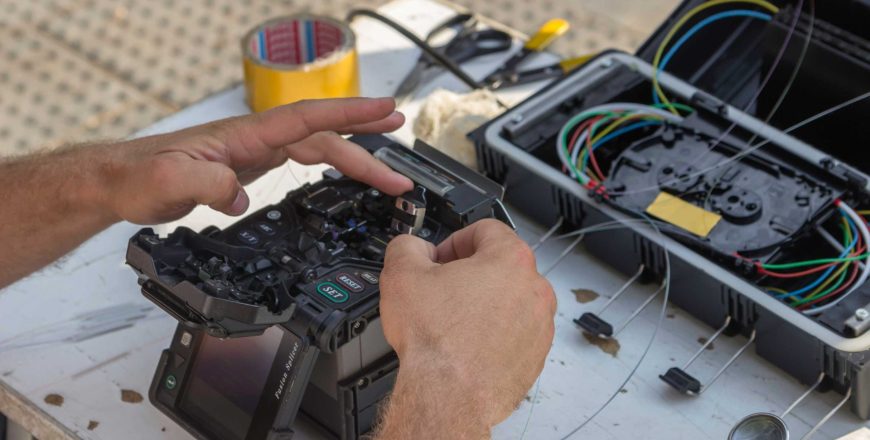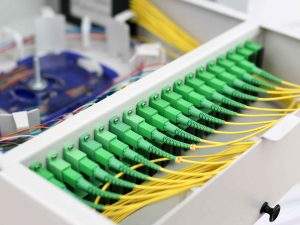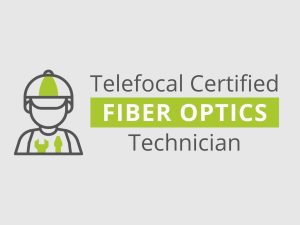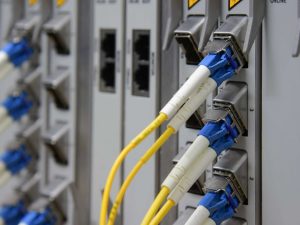FTTX and GPON Technical Workshop

Course Overview
This course is designed to provide participants with hands-on knowledge and lab experiences as well as an overview of PON fundamentals. PON standards are emphasized including Optical Line Termination (OLT), Optical Network Termination (ONT), Optical Distribution Networks (ODN). FTTx deployments discussed include Overlay, Greenfield, Brownfield and Hybrid.
Target Audience
This course is designed for professionals who are involved in the design, configuration, installation, testing, troubleshooting of a fiber optic system.
It is also suitable for technicians, system analysts, design engineers, managers, telecommunication professionals, fusion splice technicians, mechanical splice technicians, and product managers.
Duration & Training Format
- Classroom: 5 days
- LIVE Virtual: 35 hours
- A minimum of 8 or more participants is required for a Classroom session to commence.
- A minimum of 6 or more participants is required for a LIVE Virtual session to commence.
- LIVE Virtual courses can be conducted for 5 hours or 7 hours daily. Please note that the number of training days will be extended if you opt for 5 hours daily.
Upcoming Course Dates
There are no upcoming course dates currently scheduled for this course. If you are keen on attending this course, please register your interest and indicate your preferred training dates via our course enquiry form for us to open a Classroom/LIVE Virtual class schedule for this course.
Course Objectives
After completing this course, participants will be able to:
- Understand the safety requirements when working with Passive Optical Networks (PON)
- Know the basics of fiber optic theory
- Identify and name the principal parts of a fiber optic link
- Describe the light guiding principles of fiber optic transmission
- Detail the operating wavelengths used in PON applications
- Discuss the cable types used in PON applications
- Discuss the history of PON
- Build single-mode (SM) subscriber connectors (SC) for PON
- Understand the use of broadband
- Understand how voice signals are carried with PON
- Define bandwidth and understand speeds per application
- Discuss Pulse Code Modulation (PCM)
- Compare PON to SONET
- Describe the different Optical-Electrical-Optical OEO implementations
- Describe Optical-Optical-Optical OOO implementations
- Understand the principle of Dense Wave Multiplexing (DWM)
- Understand the standard bodies ITU, IEEE, FSAN
- Describe BPON, APON, EPON, GPON, TPON technologies
- Perform fusion splicing and mechanical splicing
- Test and troubleshoot a PON system
- Use a Fiber Visual Fault Finder
- Use a Light Source and Power Meter to measure link loss
- Use an Optical Time Domain Reflectometer (OTDR)
- Use an Optical Return Loss (ORL) Meter
Course Outline
Passive Optical Network (PON) Installation and Support
- What is a PON?
- Description
- Origins and Development
- PON Specifications, Standards and Work Groups
- Full-Service Access Network (FSAN)
- International Telecommunications Union (ITU)
- Institute of Electrical and Electronics Engineers (IEEE)
- FTTH Council
- Communication Methodology
- Common Terms used in Networking
- Time Division Multiplex and Time Division Multiple Access (TDM/TDMA)
- Synchronous Optical Network (SONET)
- PON Variations
- Asynchronous Transfer Mode: ATM PON (APON)
- Broadband PON (BPON)
- Ethernet PON (EPON)
- Gigabit PON (GPON)
- ITU-T G.984.3 Gigabit- capable Passive Optical Networks (GPON): Transmission
- Convergence Layer Specification
- Telephone PON (TPON)
- PON Elements and Components
- Central Office (CO) or Headend
- Optical Network Terminal and Termination (OLT), Optical Network Termination/Optical Network Unit (ONT/U), and Network Termination (NT)
- Transmitters and Receivers
- ODN
- Fiber and Cable
- Closures, Pedestals, and Cabinets
- Splices and Connectors
- Splitters and Attenuators
- PON Topologies
- Point to Point
- Point to Multipoint
- Star
- Bus
- Ring
- GPON Standards
- IEEE Std 802.3ah-2004 Media Access Control Parameters, Physical Layers, and Management Parameters for Subscriber Access Networks
- ITU-T G.984.1 General characteristics for Gigabit-capable Passive Optical Networks (GPON)
- ITU-T G.984.2 Gigabit-capable Passive Optical Networks (GPON): Physical Media Dependent (PMD) Layer Specification
- ITU-T G.984.3 Gigabit-capable Passive Optical Networks (GPON): Transmission Convergence (TC) Layer Specification
- ITU-T G.984.4 Gigabit-capable Passive Optical Networks (G-PON): ONT Management and Control Interface Specification
- ITU-T G.984.5 Enhancement Band for Gigabit Capable Optical Access Networks
- ITU-T G.984.6 Gigabit-capable Passive Optical Networks (GPON): Reach Extension
- WDM
- WDM Overview
- Basic Components Specific to WDM
- WDM Variations: Diplex, Simplex, Duplex
- The Reason for WDM in PON/FTTP
- Multiplexing and De-multiplexing
- GPON Encapsulation Method (GEM)
- GEM Standards
- Ethernet-over-GPON
- Circuit Emulation
- Testing the PON
- Optical Time Domain Reflectometer (OTDR)
- Optical Loss Test Set (OLTS)
- Optical Return Loss (ORL)
- Fiber Identifier
- Laser Fault Locator
- Designing the PON
- Fiber Distribution Hub
- Loss Budgets
- Passive Components
- Active Components
- Exercises
- Network Design Software
- Business Issues
- Costs and Demand Issues
- Technological Issues
- Customer Issues
FTTx: Fiber-to-the-Business / Curb / Home / Premises (FTTB/FTTC/FTTH/FTTP) – Installation and Support
- FTTx Preparatory Basics
- Fiber Theory
- Optical Fiber: Single-mode, Multi-mode, and Ribbon Fiber
- Optical Cable: Loose Tube, Trunk, Feeder, Distribution, and Drop
- Splicing: Fusion, Ribbon, Pigtail
- Connectors
- Panels: Patch, Distribution, Transmission
- Entrance Facilities
- Fiber Distribution Hubs
- Splice Closures: Cable and Splitter Issues
- Installation: Direct Burial, Duct, Aerial
- Introduction to Test Equipment
- Restoration
- Safety
- FTTx PON Architecture on FTTx Installations
- FTTx and PON Introduction
- PON Specifications, Standards and Work Groups: FSAN, ITU, IEEE
- Communications Methodology
- PON Elements and Components
- Topologies: Rural and Urban
- WDM in FTTx Applications
- Testing the PON
- Designing the PON: Loss Budgets
- FTTx Implementation and Testing
- Safety Review
- Closure Preparation
- Splicing
- OTDR Operation
- Optical Loss Testing
Pre-requisites
Participants should have a sound knowledge on fiber optics, fiber optics transmission, and transmission planning.



